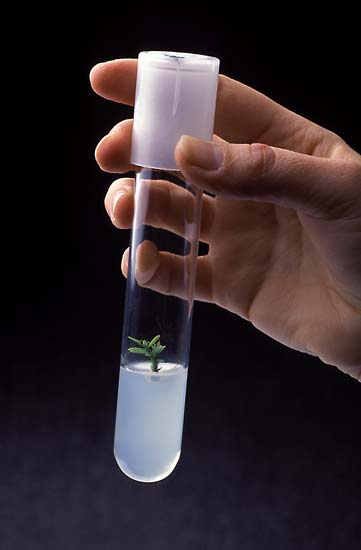The Cloning of Plants:
Nature has been cloning organisms for billions of years, and people have been cloning plants in one way or another for thousands of years.
"Plants are some of the only organisms that can clone themselves. Self cloning organisms include bacteria, most unicellular organisms, plants (not from seeds), algae (not all), fungi (not all), as well as many invertebrates." as stated by Craig Freudenrich.
 |
The Process of cloning plants
Plants often clone themselves, which is called asexual reproduction.
The plant sends a runner, which is a small looking tube, in the soil. It then grows into a new separate plant, which is genetically identical to the original plant.
When cloning a plant you need to take a part of the plant, you want to go and take a part of a twig or the stem and just plant it in soil, this is know as vegetative propagation.
Another method is called Tissue culture, were you would take a bud, node, leaf segment or root segment from the plant and this is grown in a test tube instead of planting it in the ground.
With the cloning of plants, it can save a species on the verge of extinction and find new medicines from those
plants that were saved from destruction. You can clone fruit that may carry a disease for example, "banana plants including Panama, Banana Bunchy Top Virus, Cucumber Mosaic Virus and Banana Streak Virus. Bananas are also attractive to nematodes (worms), which damage the fruit. Tissue culture is used to produce bananas that are free from disease. Some nurseries have a banana planting material scheme based on tissue culture and qualified as a QBAN - a Quality Banana Approved Nursery."
